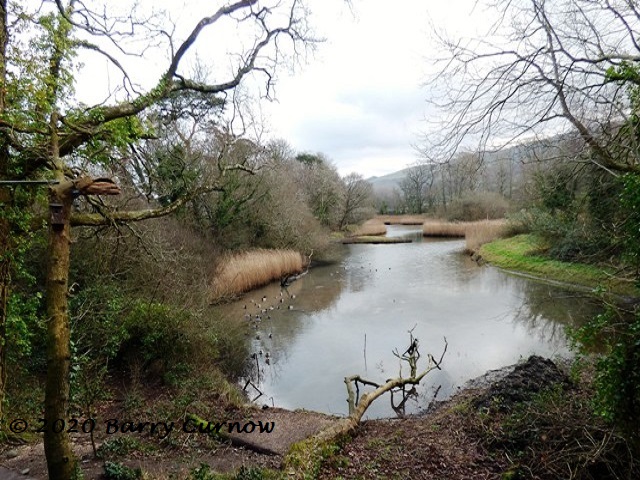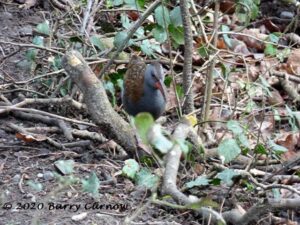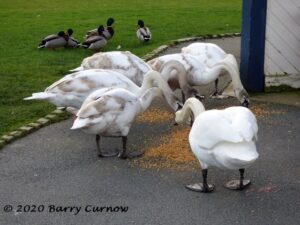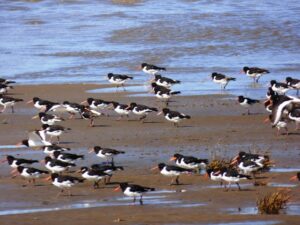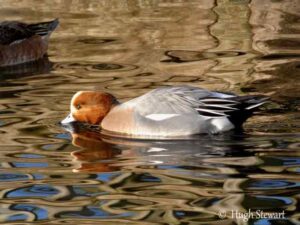Field Meeting Reports – 2020
Lunt Meadows – Sunday 1st March 2020
After a fortnight of variable weather extremes it was a splendid, sunny morning with barely a cloud in the sky, the only negative being the strong wind which provided a considerable wind-chill factor. A dozen members eventually assembled and we set off into the reserve where it was already alive with aerial activity. The footpath was predictably muddy but we were gaining some protection from the wind from the low scrubby vegetation.
Over to our right, in the main pool, could be seen a variety of ducks and geese including Pintail, Gadwall, Pochard, Shoveler and Wigeon. A couple of Grey Heron were keeping their heads down out of the wind. A pair of Black-tailed Godwit were hiding amongst the tussocks with a Lapwing for company to confuse identification. It was at this time that Hugh took a look behind and called “Barn Owl!” That got people’s attention. There it was, quartering over the eastern end of the reserve, distant, not where we were heading just then.
A Wren trilled in the undergrowth. On the other side of the pool we could see a number of Cormorant looking quite superb in their Sunday black with white thigh patches prominent. It was noticeable that many birds were in new spring plumage, the Pintails and Godwits previously mentioned looking very smart. We walked up on to the top of the Alt bank to see the Pink-footed Geese and Lapwings in the arable fields but they were quite firmly settled there and weren’t going to put on a mass flying spectacular for us.
We dropped back down out of the wind to make our way back to lunch in the cars. Remember the Barn Owl? It was still out hunting and we had some great views of it. A Kestrel was not happy with its presence! It was mid-day! Looking for a Little Owl roost (unsuccessfully) Hugh did pick out a Grey Partridge almost invisible in a field of low-lying green vegetables. A great spot!
After lunch our numbers thinned out as we started retracing our morning route. A pair of Stonechats was an early find and as a contrast in size a Great White Egret dropped into the reed bed ahead of us. We got onto the easier walking of the bank of the Alt even though the wind was still blowing hard. The flat countryside prompted one of our number to remark that it was “Big Sky” country. The Barn Owl was still flying around as we reached the Eastern end of the reserve.
Hugh and Joyce diverted to examine a Mesolithic excavation site (the area has several of these important workings) while the more weary of us returned to our cars. A final neat finishing touch to our day was the sight of five female Goosanders looking very attractive, cruising the last pool of our visit.
A very good day, the sunshine helping enormously. A great place, largely unknown to us, within easy reach.
Mike Hart
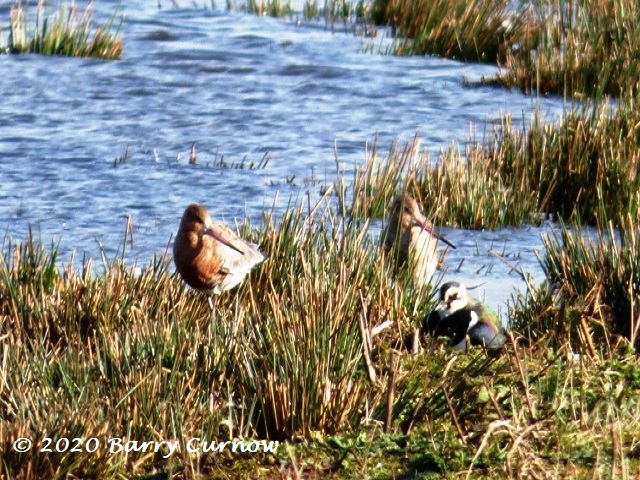
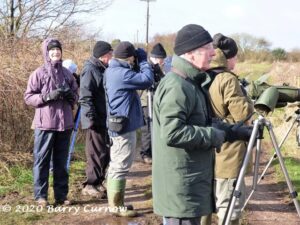
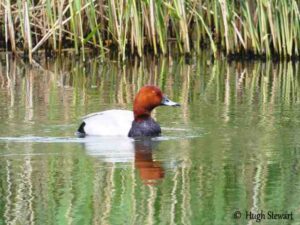
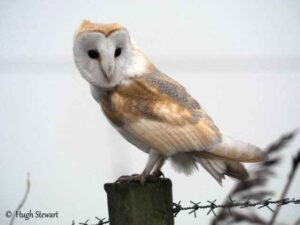
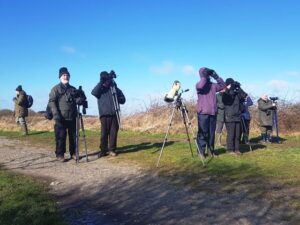
The Spinnies – Saturday 25th January 2020
The first field meeting of this year and a good start in that it wasn’t raining! Cold, yes, but dry with a light chilly wind from the south. A dozen of us met at the car park facing over the Menai Straits with Beaumaris directly opposite and Puffin Island over to the right of the panorama. Small groups of ducks were visible, mostly Wigeon, their whistling quite clearly heard over the water. Good numbers of Shelduck were hugging the shore by Penrhyn Castle and over 60 Great crested Grebe were further out in the strait. Smaller numbers of Goldeneye were easily identified when accompanied by their drakes.
We made our way to the first and newest hide, the “Viley” where the volunteer wardens were filling the feeders, Blue, Great and Coal Tits waiting impatiently for them to finish. On to the Kingfisher hide where, apart from the usual feeder species we were treated to a variety of waterfowl including Gadwall, Tufted Duck, Little Grebe and Teal.
The Sea hide gives views back towards the Kingfisher hide and also out across the Ogwen estuary. As we arrived a skein of Greylag Geese flew in off the water and occupied the field behind the reserve. The big attractions of this hide are a Kingfisher (which wasn’t showing for us today) and a Water Rail which did eventually condescend to parade in front of us. A Great Spotted Woodpecker was also rather shy but the usual suspects at the feeders were supplemented by a rather attractive Siskin. Meanwhile on the other side of the hide waders including Redshank, Knot, Black-tailed Godwit and Dunlin were disturbed from their high tide roost where they were virtually invisible at the waters edge and took to the air to swirl spectacularly until they gradually settled back down. The noise of their many wings as they twisted and turned in the air was like thunderous applause.
The sun was shining as we ate our lunches back at the cars and then it was on to Llanfairfechan. Our arrival coincided with that of several hundred Oystercatchers on the shore in front of us. With them was a score of Turnstone, another example of the wonderful camouflage of winter waders. Jackdaws were picking for morsels on the front. We checked the river for Dippers but without success so it was on to RSPB Conway. Here, apart from taking advantage of the ‘facilities’ we were hoping to see the Firecrest that has been frequenting the site. It was not to be but we did get to see a Goldcrest which demonstrated to us just how hard these little “kinglets” are to find and follow.
A good day, lovely country and sea, plenty to look at. Good company, thank you.
Mike Hart
